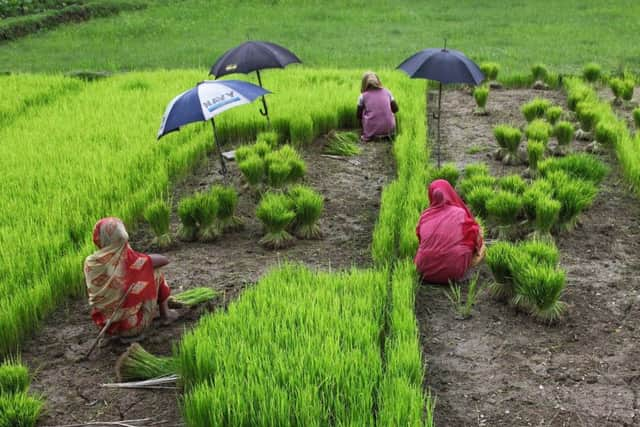Belfast-based academic uncovers simple way to make rice healthier


And the Belfast-based researcher’s low-tech solution has been found to work even at small-scale, traditional parboiling plants inBangladesh.
Queen’s say that contamination of rice with arsenic is a major problem in some regions of the world.
Advertisement
Hide AdAdvertisement
Hide AdIn Bangladesh, for example, people eat an average of around a pound of rice every day and, as a result, they are at risk for elevated exposure to inorganic arsenic.


The toxic substance is a cancer causing agent that can enter rice from the soil of flooded paddies.
But research published yesterday, led by Professor Andrew Meharg from the Institute for Global Food Security at Queen’s University, shows that there is a simple way to take the arsenic out.
After harvest, most rice in Bangladesh is parboiled — a process that involves soaking the rough rice (with husk intact) in water and then boiling it, followed by other steps to produce polished white rice.
Advertisement
Hide AdAdvertisement
Hide AdThe Queen’s professor wondered if parboiling wholegrain rice with the husk removed might reduce the levels of different forms of arsenic better.
The husk can have high levels of inorganic arsenic and it could also act as a barrier, preventing arsenic species from leaving the rest of the grain during parboiling.
Professor Meharg’s idea worked.
Researchers tested their new processing method in 13 traditional, small-scale parboiling plants throughout Bangladesh.
Th new method was shown to reduce levels of inorganic arsenic by about 25 percent in the final polished grain.
Advertisement
Hide AdAdvertisement
Hide AdAnd it had the added benefit of increasing calcium by 213 percent.
Professor Meharg said: “There has long been a search for ways to remove arsenic from rice that is both low tech and can be widely adapted.
“Our research findings show that arsenic removal can be readily conducted using this post-harvest processing of rice.”
The new method did, however, reduce potassium by 40% and the researchers say this must be balanced with the advantages of the new method.